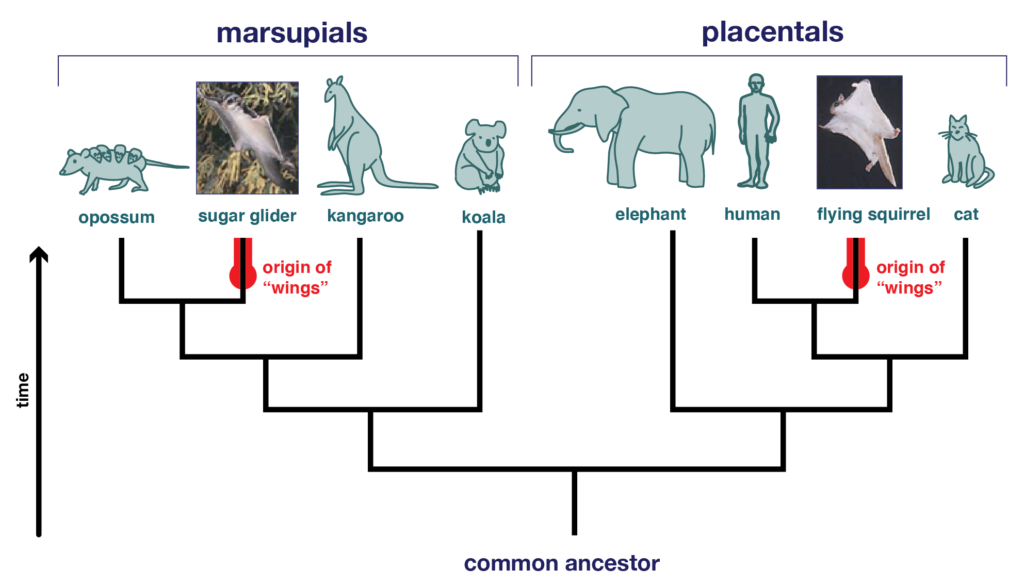That’s right! The “wings” of sugar gliders and flying squirrels are convergent traits, not homologies. Homologies are traits inherited from a common ancestor. Since sugar gliders and flying squirrels are very distantly related, it is unlikely that their common ancestor had flaps of skin stretched between its legs and that both modern animals inherited the trait from this animal. Instead, each lineage of small, nocturnal, tree-living mammals faced similar selective pressures and so evolved similar adaptations for gliding and tree-living.
You should now have a good grasp of the difference between homologies and convergent traits.
See more examples of homology and examples of analogy.

